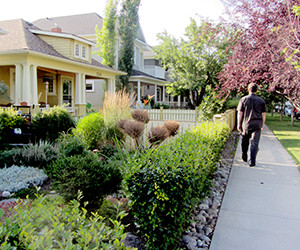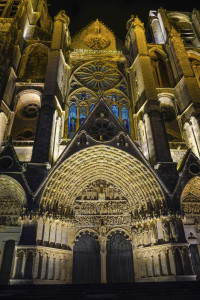Carmel Gatt was a great fan of Kolbe Times and a wonderful source of encouragement. He passed away in February 2016 of cancer, and in honour of our friend, we are reprinting the first article that he wrote for Kolbe Times. It appeared in our Autumn 2012 issue. Over the past five years, Carmel wrote three thought-provoking and beautifully written articles for us, all very well received by our readers.
Carmel was an excellent architect with an artist’s soul and a generous spirit. He had a long history in Calgary working for a number of firms before starting his own architectural practice in 2010. He especially enjoyed designing libraries, and also using his gifts in volunteer work, community development and mentoring young architects. Carmel was a deeply spiritual man, and along with his wife Jane, was a member of the Community of the Discalced Carmelite Secular Order. Quick-witted and highly creative, Carmel enjoyed painting, writing and public speaking. He is greatly missed.
-Laura and Bill Locke
Building Spirit
By Carmel Gatt
Some say that prostitution is the oldest profession – but even prostitutes needed a building to sleep in. One could therefore say that architecture is the oldest profession. It is certainly one of the most important, transforming human interventions on this planet. It has profound implications for how we live.
Everything around us acquires meaning only when experienced by humans. There is no beauty, no art, no science except when lived through and by people.
We are made of body and spirit. Since ancient times, it has been accepted by most that there is more to our existence than just what we see. The vast majority of humanity believes in some kind of god or spirit or life force that is outside our corporeal existence. It influences how we live our lives. Science, on the other hand, argues that if a phenomenon is not tangible, it does not exist. However, science can explain only a small part of everything around us. Religion and spirituality do a much better job at explaining all that we experience in life. Most importantly, they honour the human spirit.
Our built environment has, to a large extent, lost connection with the human spirit. Financial considerations and vanity have trumped human needs. We now design buildings that are cheap, or that try to capture attention, or preferably both. Too often our work spaces are devoid of personality, and our neighbourhoods are characterless, cold and insipid.
Compare today’s subdivisions to older neighbourhoods. Relate most new towns to older cities. In past times, spaces were designed to nurture the body and inspire the soul. Scale, proportion, composition and materials were developed with appreciation for how they affected the total human experience. The design created opportunities to enhance human connections, and encourage a sense of welcome. Narrower streets increased human interaction. The work of human hands and the expression of human toil that went into the craft of building them are still palpable.
On the other hand, our contemporary-built environment sets the human aside. It expects the human being to adapt to the soulless enclosures that are wrapped in machine-made materials that have no human signature.
Is this recoverable? We no longer have the skills to produce another St. Peter’s Basilica or Chartres Cathedral or the Alhambra. Neither should we – the expression of life is different now. But we can capture the essence of their effect by focusing on the human spirit again. Buildings can only express the character we give them. It is only when we create buildings that nurture the relationship with the total being, the body and soul, that we can start recreating inspiring environments. Buildings can help us become human beings when our bodies are nurtured and our souls are inspired.
Can beauty be quantified? St. Thomas Aquinas names three essential conditions of beauty: clarity, harmony and integrity. We experience clarity through the senses when we notice the distinctive elements of the object, whether that is a brilliant colour, unique form or some other characteristic. Secondly, we experience harmony through the right relationship of the parts. Thirdly, we experience integrity when the object elicits a response of pleasantness, rest, contemplation and oneness of being.
Beauty is an attitude. It transcends time. Can we say the same thing of the buildings and environments that we are producing now? We are producing far more quantity, but with far less attention to quality. We rely on technology to explore the depths of our existence, but miss the beauty. We have become dependent on machinery to manufacture cheaper objects, but with no soul.
We must start building spirit again.











